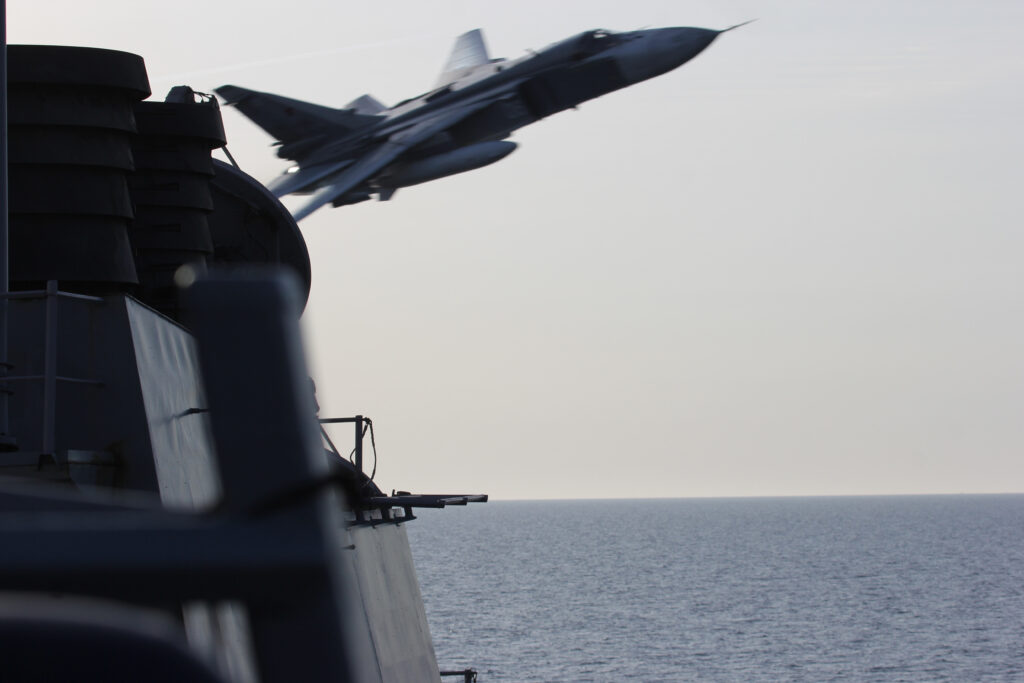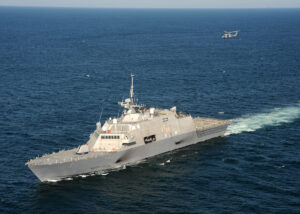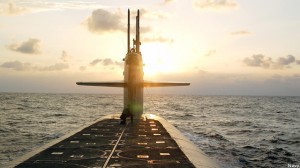Forbes: DoD Budget Should Rise As Threats Do, Budget Deal Be Damned
Posted on

A Russian Su-24 buzzes the USS Cook in the Baltic Sea, April 12, 2016.
WASHINGTON: With the House Armed Services Committee marking up its annual defense bill next week, the outspoken chairman of HASC’s seapower subcommittee told Breaking Defense he wants to undo last year’s budget deal — which he opposed and which drops Pentagon spending in 2017 — to get more dollars for defense.
That’s political heavy lifting, I told Forbes. House speaker Paul Ryan hasn’t been able to get defense hawks and budget hawks to agree on a new budget plan for 2017. The two-year budget deal for 2016 and 2017 was the product of painful brinksmanship and delicate compromise, and few legislators will have the stomach to take it back apart, especially in an election year.

Rep. Randy Forbes
“I have the stomach to look at it,” Forbes said bluntly. “The country needs to have the stomach to look at it, because the threat assessments that we’re getting get worse and worse every single briefing we have, every single hearing we have.”
Just this week, Russian fighters repeatedly buzzed the destroyer USS Cook in the Baltic Sea. They’d done the same thing to the same ship on a previous patrol in the Black Sea in 2014. (After the 2014 mock attack run, Russian sources claimed they’d shut the ship down with some kind of electronic warfare weapon, which the US Navy denied).
“They did something similar last year and the year before that. We’re beginning to see patterns,” Forbes said. “The thing that frightens me most is those patterns are beginning to escalate and get quicker” — and not just with Russia. China is probing the Philippines in what many observers fear is a build-up to building up an artificial island on the strategic Scarborough Shoal. Iran has detained US sailors and fired missiles near US ships. North Korea just conducted another missile test, although this one appears to have misfired.
“The other thing that’s becoming routine is our lack of response to any of this across the globe,” Forbes said. “You’re seeing a response to the vacuum and lack of leadership this administration has had over the last eight years.” (Even more than many other Republicans, Forbes has been a fierce critic of the Obama administration).

Littoral Combat Ship
Yet meanwhile the defense budget keeps getting tighter. For the Navy in particular, that forces painful choices between quantity and quality, capacity and capability. The most notable example with the administration’s cut of 12 relatively small and affordable Littoral Combat Ships to pay for more aircraft and missiles for larger ships such as carriers and destroyers.
That’s “a false choice between our capabilities and our capacities,” Forbes said .”We should do both.” (He declined to comment specifically on LCS, which has both strident critics and committed backers in Congress). Forbes wants to increase both the size of the fleet and the combat power of its ships — which is expensive.
“We have to increase the dollars,” he said. “If we can’t get that number up, we’re then having to [make] false choices.”
One of Forbes’ particular priorities is the Ohio Replacement Program, the new nuclear-missile-launching submarine (SSBNs) to replace the aging Ohio class. ORP is also the top priority of the Navy leadership, which warns they can’t build the 12 expensive boats inside their normal budget. So Forbes and other HASC leaders created a special National Sea-Based Deterrent Fund (NSBDF) to pay for the subs outside the shipbuilding account. After initial skepticism from budget hawks and Pentagon officials alike, Forbes noted with satisfaction, both Congress and the Navy have started putting money in the fund.
Could the fund be expanded or replicated to pay for other programs to modernize the nuclear force, like the Ground-Based Strategic Deterrent (GBSD) to replace the Minuteman ICBM or even the B-21 Long-Range Strike Bomber (LRSB), which will carry both nuclear and conventional weapons? The Congressman was noncommittal.
The law setting up the National Sea-Based Deterrent Fund includes reforms — such as authorities to cut costs and streamline acquisition — that could and should be applied to other programs, Forbes said. But, he argued, the Ohio Replacement Program is truly unique.
“The only thing these boats will do is nuclear deterrence,” Forbes said, in contrast to the B-21, which also falls under his subcommittee’s jurisdiction. (Its full title is “Seapower and Projection Forces.”) In fact, he noted, “70 percent of the nuclear deterrent of the United States [will be] riding on 12 boats.” Further, the 12 subs is the absolute minimum the military calculates it will require to provide continuous at-sea patrols, which means there’s no doubt about the quantity to be procured, easing economies and efficiencies of scale.

An Ohio-class nuclear missile submarine (SSBN).
By contrast, the numbers to be bought of other vessels seem to keep shifting. The Navy, with some cheerleading from Congress, wants to accelerate production of attack submarines, destroyers, and amphibious warships, but the funding remains in doubt. The LCS got cut from 52 to 40 ships.
How about the fleet as a whole? Portions of the Navy’s 30-year-shipbuilding plan leaked to Breaking Defense say the total fleet will reach 308 ships in 2021, meeting the official requirement for size — but an ongoing reassessment will probably raise that 308 number. Experts like the Congressional Budget Office’s Eric Labs have testified to Forbes’ committee that the Navy, given likely funding levels, will never reach 308 and end up somewhere around 237 instead. Forbes is personally pushing for 346, the fleet size suggested by the independent National Defense Panel in 2014.
“The first [step] is to have the Armed Services Committee, have Congress, and have the country realize that we simply have to have a bigger navy than we have today,” Forbes said. “We have to put real teeth into the types of ships we have and the dollars to build those ships.”
Subscribe to our newsletter
Promotions, new products and sales. Directly to your inbox.
